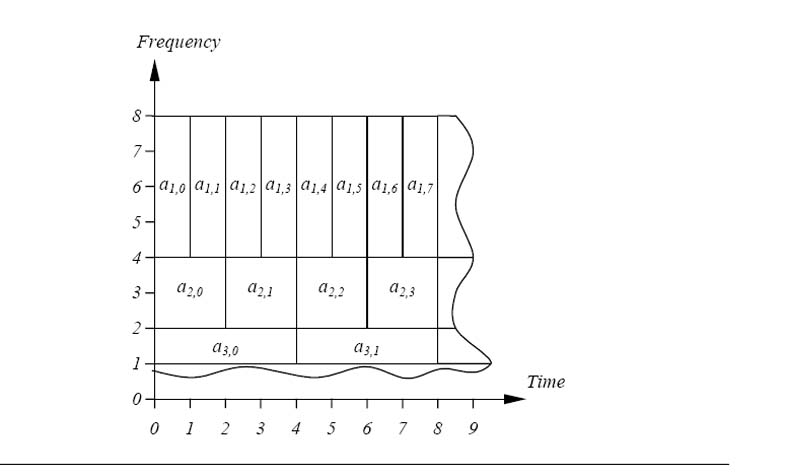Visible to Intel only — GUID: GUID-5B421C02-9A18-44C6-953E-9CF1B72AE740
Visible to Intel only — GUID: GUID-5B421C02-9A18-44C6-953E-9CF1B72AE740
Wavelet Transform Functions
This section describes the wavelet transform functions implemented in Intel IPP.
In signal processing, signals can represented in both frequency and time-frequency domains. In many cases the wavelet transforms become an alternative to short time Fourier transforms.
The discrete wavelet signal can be considered as a set of the coefficients ai,k with two indices, one of which is a “frequency” characteristic and the other is a time localization. The coefficient value corresponds to the localized wave amplitude or to one of basis transform functions. The “frequency” index shows the time scale of the localized wave. Function bases originated from one local wave by decreasing the wave by 2n in time are the most widely used. Such transforms can be used for building very efficient implementations called fast wavelet transforms by analogy with fast Fourier transforms. Figure "Wavelet Decomposition Coefficients in Time-Frequency Domain" shows how the time and frequency plane is divided into areas that correspond to the local wave amplitudes. This kind of transforms is implemented in Intel IPP and referred to as the discrete wavelet transform (DWT).

The DWT is one of the wavelet analysis methods that stem from the basis functions related to the scale factor 2. Thus, there is a basic common element shared by the DWT and the other packet analysis methods.
Likewise another basic element for signal reconstruction or synthesis can be defined, called the one-level inverse DWT. Figure "Three-Level Discrete Wavelet Decomposition" shows the diagram of the forward DWT which allows to switch to time-frequency representation shown in Figure above. The diagram includes three levels of decomposition. Figure "Three-Level Discrete Wavelet Reconstruction" shows the corresponding procedure of signal reconstruction based on the elementary one-level inverse transform.
The implementation of discrete multi-scale transforms is based on the use of interpolation and decimation filters with the resampling factor 2. The basis of the multi-scale signal decomposition and reconstruction functions uniquely defines the filter parameters. The Intel IPP multi-scale transform functions use filters with finite impulse response.
The Primitives contains two sets of functions.
- Transforms designed for fixed filter banks. These transforms yield the highest performance.
- Transforms that enable the user to work with arbitrary filters. These functions use effective polyphase filtration algorithms. The transform interface gives the option of processing the data in blocks, including in real-time applications.

